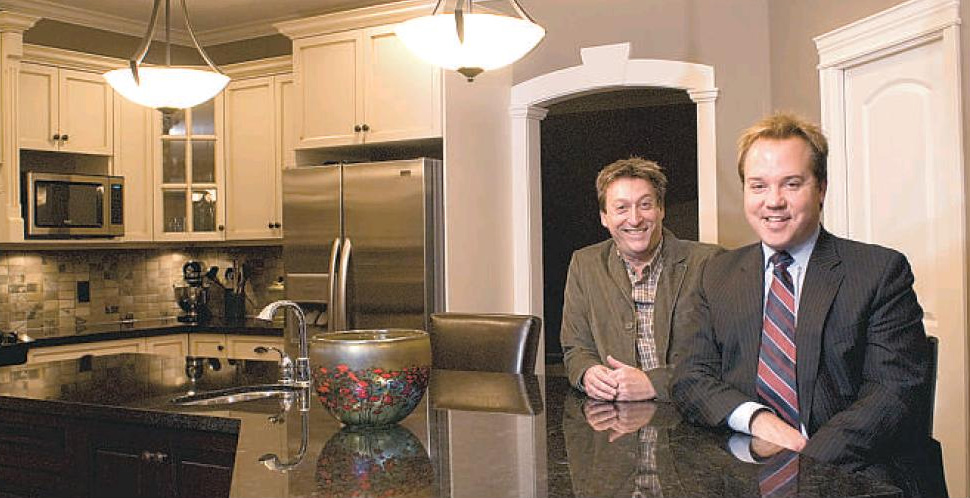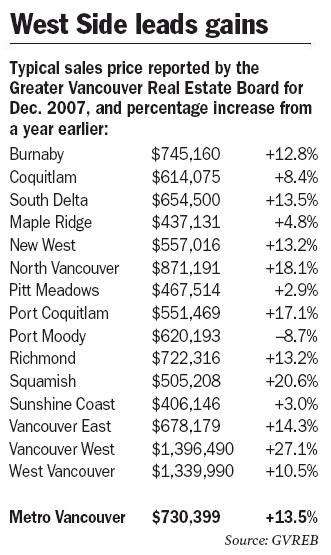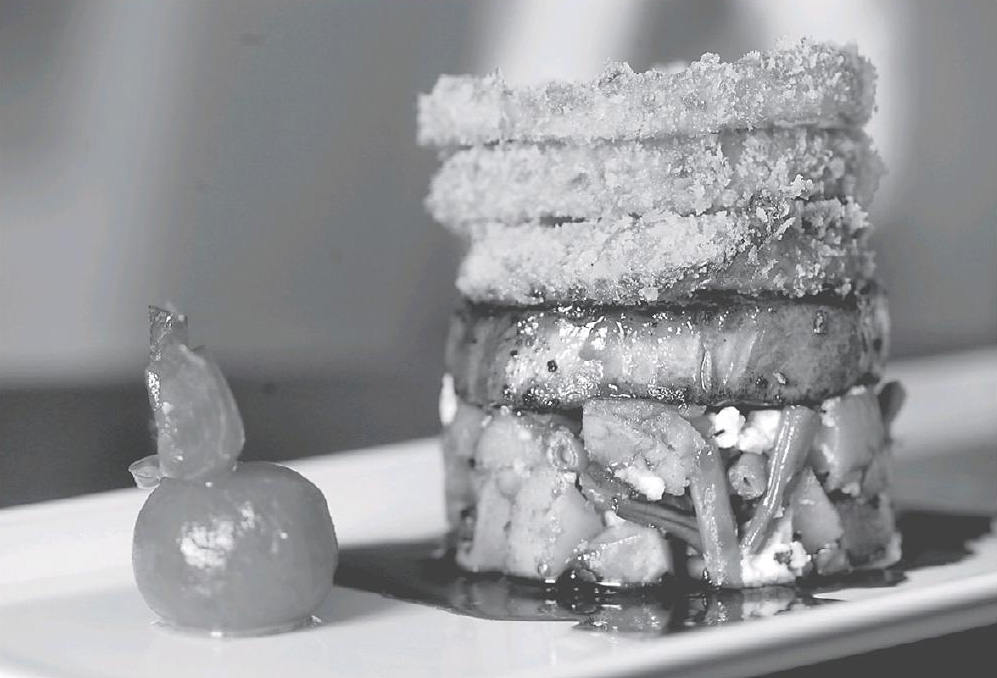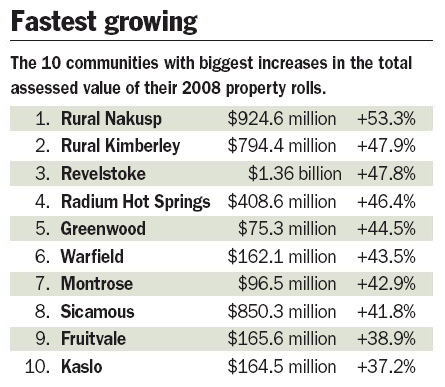Noelle Knox
USA Today

Passerby John Malone reads about one of many homes for sale on a San Jose, Calif., street.
If you’d asked housing economist David Seiders at this time last year to forecast the real estate industry’s future, he would have told you to expect “a recovery year” in 2008.
“That outlook has been cut dramatically from what I was saying a year ago,” Seiders, chief economist for the National Association of Home Builders, concedes. He’s slashed his projection for home construction by 35% and says 2008 will be “another down year” for housing overall.
How far down? Most economists caution that their real estate forecasts for this year stand on shaky ground. The depth of the downturn will depend on whether the overall economy slips into recession, how fast and how sharply home prices fall, whether more turmoil rocks the credit markets and how many more foreclosures lie ahead.
“We’re really in a danger zone in terms of overall economic activity,” says Seiders, who sees a 40% chance of recession this year, up from his earlier estimate of 30%.
Mark Zandi, chief economist at Moody’s Economy.com, calls the current real estate recession the gravest since World War II. He expects home sales to hit bottom in the first half of this year, with prices continuing to fall until early 2009.
An even more pessimistic economist, David Rosenberg at Merrill Lynch, goes so far as to warn, “Real estate pricing in general can expect to be in the doldrums through 2012.”
The biggest problem is the glut of homes for sale — more than 10 months’ worth. And about 2 million of those homes (about 2.6%) are vacant, with banks or builders trying to get them off their hands.
The number of vacant homes is expected to rise further this year because a record number of homes are entering foreclosure. And hundreds of thousands of homeowners with subprime, adjustable-rate loans will face higher monthly payments. For some, it will be the last financial straw.
Meanwhile, many would-be buyers are having trouble qualifying for loans.
Half of senior loan officers surveyed by the Federal Reserve in October said they had tightened their standards from July. Gone are loans for people who have trouble paying their bills on time. Gone are mortgages for 100% of the home price. Gone are loans requiring no proof of income or assets.
The stricter rules will deliver an especially severe punch to such areas as Arizona, California, Nevada, Florida and in and around Washington, D.C., and Manhattan, where those types of mortgages accounted for about 60% of purchase loans last year, according to Economy.com.
“A lot of (buyers) haven’t come to the realization that the subprime market no longer exists,” said Ritch Workman of Workman Mortgage in Melbourne, Fla. “Mortgage brokers are turning away more and more borrowers.”
That isn’t likely to change. The Federal Reserve last month issued hand-slapping rules for all lenders and mortgage brokers to end the riskiest lending practices. The new rules will take effect early this year, after a public comment period.
For buyers who have built up stellar credit and lots of cash in the bank, there are loans aplenty. Interest rates also remain historically low, and falling prices in many areas are making homes more affordable for more families.
In such a risky market, what’s a buyer or seller to do? What follows are some strategies for buyers, sellers and homeowners that will help, no matter how grim the housing recession gets.
Here are some strategies for sellers, buyers and homeowners in a high-risk real estate market:
Buyers
Get that credit score up
If you’re among the would-be buyers still finding themselves locked out of the market:
•Raise your credit score by paying your bills on time. Don’t open any new credit card accounts or buy a car with a new loan. Don’t buy anything, such as furniture, with a “no payments or interest for 90 days”-type of plan. With such plans, even if you pay off the entire amount in three months, your credit score will still take a hit.
•Forget belt-tightening; get a full-fledged corset. Most lenders now require buyers to put down at least 5% of the purchase price (that’s about $10,500 on the national median home price of $210,200). The main exceptions are loans insured by the Federal Housing Administration, which require only 3%, and loans guaranteed by the Department of Veterans Affairs, which may cover the entire purchase price.
•Don’t change jobs, if you can help it, until you’ve been formally approved for a mortgage. Lenders increasingly see job stability as a vital factor in creditworthiness.
•Recognize that you have the upper hand in bargaining. Consider asking the seller to help pay for any repairs, or to help pay for closing costs or to cover any homeowners’ association fees for a few months. If it’s a new home, ask the builder for even more freebies than it offered to get you in the door.
Sellers
Wait if you can or spruce it up
Lots of sellers are getting a harsh refresher in a lesson from Economics 101: the relationship between supply and demand. A record 4.3 million existing homes are for sale. In areas where there’s too much supply, prices must fall.
This week, economists for Freddie Mac released their latest economic forecasts, which show home prices falling nearly 8% this year and not rising again before the end of 2009.
Prices in 11 major metro areas posted record declines in October, led by Miami, Tampa, Detroit and San Diego, according to the S&P/Case-Shiller index.
More than 1 million homeowners nationwide are expected to lose their homes through foreclosure. Lenders, trying to cut their costs of maintaining and marketing homes, typically sell foreclosed homes for 20% below the market price.
“I tell sellers if they don’t need to sell right now, just remove their home from the market,” says Ron Shuffield of Esslinger-Wooten-Maxwell Realtors in Miami.
All of which means that to sell your house, you probably need to get it in near-perfect condition, price it right and market it aggressively.
Of course, not every U.S. real estate market is in the tank. Areas that never saw head-spinning price increases to begin with aren’t seeing big price drops now. In the third quarter, government data showed that prices actually rose in 204 of the 287 metro areas surveyed. And in nearly every city, there are neighborhoods, or coveted condo developments, that seem immune to local and national trends.
But for most homeowners who need to sell, here are some tips:
•Start your spring cleaning now. Every surface should sparkle. Every groove should be dirt-free. Above all, wash the windows. Declutter the house by packing up family photos, stacks of paper, medicine bottles on the bathroom counter, the books overflowing the bookcase. Hide trash cans, ashtrays, the laundry hamper, the kitchen sponge, the cat’s litter box and food dishes.
•Paint. Dark walls tend to make a house look smaller. Walls should be off-white or have earthy tones if the room draws lots of light. Real estate agents suggest that the carpet be light beige. Open or take down curtains, so the rooms will absorb as much light as possible.
•Most rooms contain too much furniture, which makes rooms look smaller. Reduce the number of pillows on the couch. Remove afghans and blankets. Scale back the number of paintings on the walls. Remove the leaves from your dining table and put no more than four chairs around it. Reduce the number of dishes in the china cabinet, leaving only a few.
•Keep the lawn mowed and the edges neat. Trim shrubs, especially around windows. Put flowering plants near the front door. Does the house need painting? Consider painting or staining the front door; it’s one of the least expensive ways to spruce up the entry. If there’s furniture on the porch, make sure it isn’t plastic but rather good-quality wicker or wrought iron. Power-wash or stain the deck. Remove or hide old cans and bottles, auto parts, boats and RVs.
•What’s your marketing strategy? If using an agent, make sure she or he is using the Internet as a major part of the advertising campaign. Tempt buyers by offering to help pay closing costs. Or better still, offer to lend the buyer part of the money they need, with what’s called “carry-back financing.”
Homeowners
Check your documents
Dig out your mortgage documents and triple-check what kind of loan you have. Specifically, you want to know whether it has an adjustable interest rate, how often the rate can rise and the maximum it can rise to. Is there a penalty for paying off the loan early? If so, when does the penalty expire?
Nearly 2 million homeowners have subprime, adjustable-rate mortgages (ARMs) that will reset before July 2010. The average borrower will see monthly payments jump by about $350, to $1,550. Already, one in five homeowners with a subprime ARM was behind at least one payment at the end of the third quarter, according to the Mortgage Bankers Association.
Last month, Treasury Secretary Henry Paulson announced a deal with lenders that would help thousands of homeowners with subprime ARMs. Under the plan, homeowners who got their loans between Jan. 1, 2005, and July 31, 2007, would either be put on a fast-track program to refinance their loan to a fixed-rate mortgage at a lower rate, or have their rate frozen for five years.
But there are many exclusions to the program. In addition, millions of borrowers with prime ARMs aren’t eligible. Neither are most of those with exotic adjustable-rate loans that let them pay only the interest portion or even less each month.
Dan Przewlocki is one of them. He refinanced his home outside Detroit in 2004, so he doesn’t qualify for the rescue plan. Przewlocki, 52, got what’s called an option-ARM. It lets him choose among payment options each month. The less he pays, the more the principal balance grows.
He’s been paying the highest option and hasn’t missed one payment. Yet his rate has been rising nearly every month, catapulting Przewlocki’s monthly payment to $2,700 from $1,200 initially.
Washington Mutual, his lender, won’t refinance the $310,000 loan because the home’s value has sunk below the value of the loan, to $250,000, Przewlocki said.
He works in an auto maintenance plant and looks for handyman jobs and temporary work at Kelly Services. But his house payments eat up nearly 70% of his gross income. And Przewlocki, a tech sergeant in the Air Force reserves, knows he’ll fall behind on his payments once he’s deployed to the Middle East this year.
“If the mortgage company wants to take the house,” he says, “the keys are going to be on the kitchen table.”
Sara Gaugl, a spokeswoman for Washington Mutual, says the amount of Przewlocki’s loan and the current value of his house “put him out of scope for a refinance under WaMu’s credit guidelines. However, we will continue to work with Mr. Przewlocki to determine if there are other options available to him.”
If you’re in a similar situation, or think you might be soon:
•Contact your lender as soon as you know your payment will be late. If you want free credit counseling, you can also call the Homeownership Preservation Foundation at 888-995-HOPE (888-995-4673).
•If you can’t renegotiate the terms of your loan, and your home is worth less than you owe, consider a “short sale”: If your lender approves, you can sell your property at an agreed upon price, and your lender will forgive the remaining balance on your mortgage.
That’s much better than wrecking your credit with a foreclosure. And under a law signed by President Bush last month, sellers no longer have to pay taxes on the amount of the forgiven debt. The law is retroactive to Jan. 1, 2007, and is scheduled to expire at the end of 2009.
Even if you don’t keep your New Year’s resolution to shed 20 pounds, getting out from under an unaffordable mortgage will take a huge weight off your shoulders.









